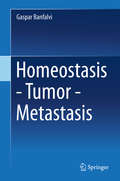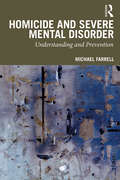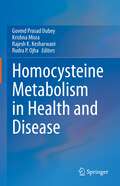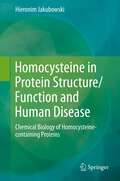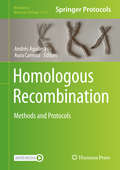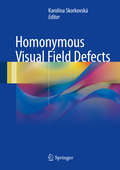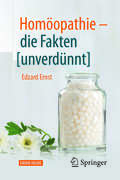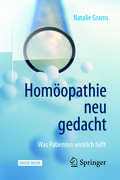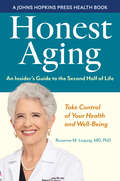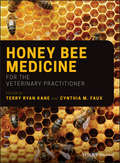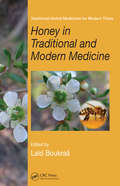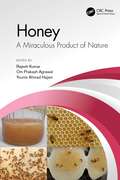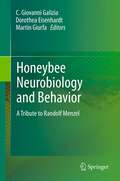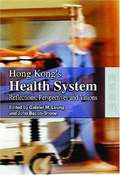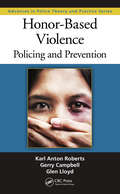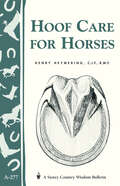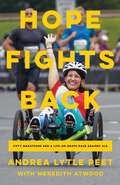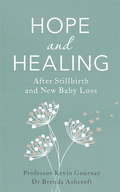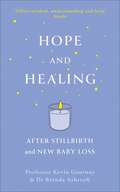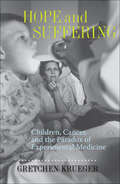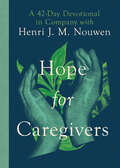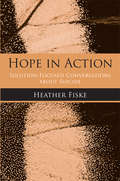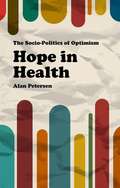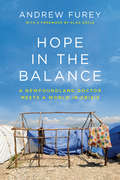- Table View
- List View
Homeostasis - Tumor - Metastasis
by Gaspar BanfalviHomeostasis. The health of an organism is influenced by external and internal changes that may lead to the loss of homeostasis. Under healthy conditions organisms compensate these changes. If compensation fails disease ensues. Attention will be paid to lifestyle, environmental changes, genetic makeup and health system. It will be answered how lifestyle, environment, genetic makeup and social conditions help to maintain or upset the biological balance and lead to cancer. Tumor formation. To understand this process the transfer of intracellular and the pathways of extracellular information (signal transduction) will be reviewed briefly. Loss of cellular balance may lead to cell death (. e. g. apoptosis) or to rapid cell growth of cells leading to tumor formation. Metastasis. Animal tumor models serve to understand the spread of the primary tumor cells to distant locations of the organism. Different types of tumors and metastases will be reviewed.
Homicide and Severe Mental Disorder: Understanding and Prevention
by Michael FarrellHomicide and Severe Mental Disorder: Understanding and Prevention provides a complete picture of how severe mental disorder can be assessed in cases of homicide, and how improved understanding can impact risk reduction and prevention. Michael Farrell brings together a wide range of material including theory, research, demographic data, case examples, enquiry reports, and practical strategies, providing clear examples throughout. Farrell draws on examples of homicide representing a great challenge to both comprehension and prevention – cases that have sometimes provoked media criticism of public policy and services and have aroused public anxiety. In seeking fuller understanding, the book takes an overview of severe mental disorder, homicide, and prevention, before introducing the approach of Situational Crime Prevention and related theory and discussing demographic features of perpetrators and victims. Turning to prevention, the text examines examples of research into homicides perpetrated by individuals with severe mental disorder. Insights from Situational Crime Prevention are applied to selected cases, and a wider view is then taken looking at the criminological features of means, motive, opportunity, and location. Organisational constraints and limitations of communication in services are considered, and cases illuminating the issues and challenges throughout the book are summarised in a structured end of volume glossary. As evidence and insights accumulate and cohere, they more clearly indicate preventive strategies. Homicide and Severe Mental Disorder will be of great interest to students, researchers, and teachers in psychiatry, psychology, and criminology, health and mental health professionals, criminal justice personnel, and those working with individuals with severe mental disorder.
Homocysteine Metabolism in Health and Disease
by Rajesh K. Kesharwani Krishna Misra Govind Prasad Dubey Rudra P. OjhaThis book comprehensively reviews the association of homocysteine metabolism with the etiology of various human disorders. The well-defined chapters embedded the central and peripheral effects of homocysteine metabolism intricately related with cardiovascular, neurodegenerative, metabolic, and autoimmune disorders. Further, it discusses the mechanisms of perturbance of cellular proteostasis by elevated homocysteine levels and provides a comprehensive account of pathophysiological consequences and clinical implications of homocysteine-containing proteins. The book also reviews association of genetic variants of homocysteine metabolic genes with type 2 diabetes mellitus and obesity. It also describes the molecular mechanism of hyperhomocysteinemia in the negative/feedback regulation of neural stem cell proliferation and alterations in DNA methylation. Taken together, it summarizes the mechanisms of hyper homocysteinemia-induced endothelial dysfunction and physiological functions of hydrogen sulfide as the protective agent.
Homocysteine in Protein Structure/Function and Human Disease: Chemical Biology of Homocysteine-containing Proteins
by Hieronim JakubowskiExcess of homocysteine, a product of the metabolism of the essential amino acid methionine, is associated with poor health, is linked to heart and brain diseases in general human populations, and accelerates mortality in heart disease patients. Neurological and cardiovascular abnormalities occur in patients with severe genetic hyperhomocysteinemia and lead to premature death due to vascular complications. Although it is considered a non-protein amino acid, studies over the past dozen years have discovered mechanisms by which homocysteine becomes a component of proteins. Homocysteine-containing proteins lose their normal biological function and become auto-immunogenic and pro-thrombotic. In this book, the author, a pioneer and a leading contributor to the field, describes up-to date studies of the biological chemistry of homocysteine-containing proteins, as well as pathological consequences and clinical implications of their formation. This is a comprehensive account of the broad range of basic science and medical implications of homocysteine-containing proteins for health and disease.
Homologous Recombination: Methods and Protocols (Methods in Molecular Biology #2153)
by Andrés Aguilera Aura CarreiraThis volume explores homologous recombination’s (HR) essential role in meiotic and somatic cells. It discusses the analysis of different steps of the HR process from the genetic, molecular biology, and cell biology perspectives. Using a variety of model systems, chapters in this book cover topics such as the genome-wide mapping of DNA double-strand breaks (DSB); analysis of DNA-end resection and recombination intermediates by gel electrophoresis and southern blotting; cell-based monitoring of HR activity in meiotic and mitotic cells; in vitro analysis of branch migration, DNA strand exchange and Holliday junction resolution; or super resolution imaging of HR repair at collapsed replication forks. Written in the highly successful Methods in Molecular Biology series format, chapters include introductions to their respective topics, lists of the necessary materials and reagents, step-by-step, readily reproducible laboratory protocols, and tips on troubleshooting and avoiding known pitfalls.Cutting-edge and thorough, Homologous Recombination: Methods and Protocols is a valuable resource that uses both classical and more recent approaches to answer questions on the HR mechanism. It is a useful tool for scientists working on the field of genome integrity, as well as those working in cancer biology and DNA repair.
Homonymous Visual Field Defects
by Karolína SkorkovskáThis book provides a concise, up-to-date overview on homonymous visual field defects, and especially homonymous hemianopia. All aspects of the subject are covered, from anatomy and pathophysiology to diagnosis and management. Emphasis is placed on practical issues and major advances in ophthalmology, neurology, imaging techniques, and psychology. Rehabilitation strategies are described, and methods supporting compensation strategies are recommended. A separate chapter considers driving with homonymous hemianopia, which represents one of the critical issues in traffic ophthalmology. This book will be of particular value to ophthalmologists, neurologists, neurosurgeons, and neuroscientists. It will be an invaluable asset in diagnostic and treatment decision making in patients with homonymous visual field defects, which are the most frequent type of visual field deficit after acquired unilateral postchiasmal brain damage.
Homöopathie - die Fakten [unverdünnt]
by Edzard Ernst Jutta BretthauerHomöopathie und Wissenschaft Dieses Buch zeichnet die Entstehung der Homöopathie nach, erläutert ihre grundlegenden Prinzipien, klärt über die heutige Praxis auf und diskutiert die Gründe für die anhaltende Beliebtheit dieser Heilmethode. Vor zweihundert Jahren hatte die Medizin Kranken wenig zu bieten: Man ließ sie zur Ader oder verabreichte ihnen extrem starke Abführmittel – Praktiken, die den Krankheitsverlauf verkürzten, indem sie den Tod des Patienten beschleunigten. Vor allem als Reaktion auf diese brachiale und ineffektive Medizin entwickelte der deutsche Arzt Samuel Hahnemann im ausgehenden 18. Jahrhundert ein therapeutisches System, das er als Homöopathie bezeichnete. Während sich die Medizin seit jener Zeit enorm gewandelt und weiterentwickelt hat, wird die Homöopathie – mit ihren Wurzeln in Alchemie und Metaphysik – heute noch genauso praktiziert wie in Hahnemanns Tagen. Die Leser dieses Buches werden nicht nur die Geschichte der Homöopathie und ihrer fast magischen Anziehungskraft kennen lernen, sondern vor allem die rationale und wissenschaftliche Herangehensweise des Autors zu schätzen wissen, der in kompakter Form die gesamte Bandbreite der biologischen, chemischen und psychologischen Fragen beleuchtet, die diese Behandlungsform aufwirft.
Homöopathie neu gedacht
by Natalie GramsDer Versuch eines BrückenschlagsDieses viel diskutierte Buch hat die Debatte um die Homöopathie neu belebt. Die nun vorliegende Taschenbuchausgabe, in der auch die Erfahrungen der Autorin nach der Erstveröffentlichung Niederschlag gefunden haben, wird unentbehrlich bleiben für die weitere Diskussion.Die Homöopathie ist über 200 Jahre alt und erfährt auch heute noch einen ungebrochenen Zustrom. Viele Patienten und Therapeuten schwören auf die „alternative Heilmethode“, die mittlerweile auch von vielen Krankenkassen erstattet wird. Kritikern erscheint dies völlig unverständlich – ist für sie doch längst klar, dass die Homöopathie hoffnungslos unwissenschaftlich ist und allenfalls einen Placebo-Effekt zu bieten hat. Die Positionen von Befürwortern und Gegnern scheinen dabei ebenso unverrückbar wie unvereinbar. Das Buch beantwortet spannende Fragen: Was bleibt in einer Medizin des 21. Jahrhunderts übrig von dem Gedankengebäude der Homöopathie? Wie wirkt sie wirklich? Welche der ursprünglichen Theorien können wir auch heute noch guten Gewissens anwenden und zum Nutzen von Patienten und Gesundheitssystem einsetzen? Wo aber hat die Homöopathie Grenzen und muss in der Tat kritisch betrachtet und bewertet werden? Die Autorin hat sich über Jahre mit den Kritikpunkten auseinandergesetzt, nimmt aber gleichzeitig auch die Wünsche und Sorgen der Patienten ernst, die sich in der konventionellen Medizin oft nur unzureichend versorgt fühlen. Ihr Buch versucht einen (überfälligen) Brückenschlag zwischen zwei traditionell verfeindeten Lagern.Die AutorinNatalie Grams ist Ärztin, Autorin und Leiterin des Informations-Netzwerks Homöopathie. Ihr Buch und ihre kritische Einschätzung der Homöopathie haben ihr zahlreiche Interviews beschert und ein neues Nachdenken über diese Heilmethode befördert.
Honest Aging: An Insider's Guide to the Second Half of Life (A Johns Hopkins Press Health Book)
by Rosanne M. LeipzigYour indispensable guide to taking charge of the second half of your life.From Dr. Rosanne M. Leipzig, a top doctor with more than 35 years of experience caring for older people, Honest Aging is an indispensable guide to the second half of life, describing what to expect physically, psychologically, functionally, and emotionally as you age.Leipzig, an expert in evidence-based geriatrics, highlights how 80-year-olds differ from 60-year-olds and why knowing this is important for your health. With candor, humor, and empathy, this book will provide you with the knowledge and practical advice to optimize aging. The book• helps you recognize age-related changes in your body and mind and understand what's typical with aging and what's not;• offers guidance for common health concerns, including problems with memory, energy, mood, sleep, incontinence, mobility and falls, hearing and vision, aches and pains, gastrointestinal problems, weight, and sex;• shares advice on how to make decisions about health care, driving, and where to live; • includes helpful checklists and lists of medications to prepare for doctor and hospital visits;• recommends the best technology options, such as mobility devices, emergency device systems, and more;• counters common myths about aging; and• offers resources for additional information, self-help, and support.Enriched by illustrations, patient stories, and deep dives into science and the latest research, Honest Aging gives you the tools to take control of your health and well-being as you age.
Honey Bee Medicine for the Veterinary Practitioner
by Terry Ryan Kane Cynthia M. FauxAn essential guide to the health care of honey bees Honey Bee Medicine for the Veterinary Practitioner offers an authoritative guide to honey bee health and hive management. Designed for veterinarians and other professionals, the book presents information useful for answering commonly asked questions and for facilitating hive examinations. The book covers a wide range of topics including basic husbandry, equipment and safety, anatomy, genetics, the diagnosis and management of disease. It also includes up to date information on Varroa and other bee pests, introduces honey bee pharmacology and toxicology, and addresses native bee ecology. This new resource: Offers a guide to veterinary care of honey bees Provides information on basic husbandry, examination techniques, nutrition, and more Discusses how to successfully handle questions and ‘hive calls’ Includes helpful photographs, line drawings, tables, and graphs Written for veterinary practitioners, veterinary students, veterinary technicians, scientists, and apiarists, Honey Bee Medicine for the Veterinary Practitioner is a comprehensive and practical book on honey bee health.
Honey in Traditional and Modern Medicine (Traditional Herbal Medicines for Modern Times)
by Laïd BoukraâThe use of honey can be traced back to the Stone Age. Evidence can be found for its nutritional and medicinal use beginning with prehistoric and ancient civilizations. Currently, there is a resurgence of scientific interest in natural medicinal products, such as honey, by researchers, the medical community, and even the general public. Honey in Tra
Honey: A Miraculous Product of Nature
by Rajesh Kumar Om Prakash Agrawal Younis Ahmad HajamHoney is a supersaturated solution of sugar made by bees. Honeybees collect a liquid secretion from flowers, called nectar, and take this back to their hives. It is an appreciated natural gift to humanity derived entirely from honeybees. Honey is the by-product of nectar collected by bees from the flowers, with some digestive enzymes produced by the honeybees themselves. Honey: A Miraculous Product of Nature summarizes the current status of honey, it’s uses and related aspects. This illustrated volume describes use of honey in traditional medicines, i.e. Ayurveda, Siddha, and Unani by acting as a preservative and nourishing agent. Also, other properties like digestibility, palatability, deliciousness, refreshing, thirst quencher, stomachic, anti-obtrusive, expectorant, anti-oxidative, anti-tussive and blood purifier are explained in beautiful manner. The role of honey in improving eyesight, strengthens gums and teeth and it’s use in jaundice, spleen enlargement, sore throat, chest diseases, sexual debility, renal and cystic calculi, intestinal worms, heart diseases and leprosy is very well described. The compiled knowledge from range of bee scientists, Honey: A Miraculous Product of Nature aims to provide broad knowledge on honey to the researchers, apiculturists and students to continue their work on honey and honeybees.
Honeybee Neurobiology and Behavior
by Dorothea Eisenhardt Martin Giurfa C. Giovanni GaliziaThe book is a sequel of a similar book, edited by Randolf Menzel and Alison Mercer, "Neurobiology and Behavior of Honeybees", published in 1987. It is a "Festschrift" for the 70th birthday of Randolf Menzel, who devoted his life to the topic of the book. The book will include an open commentary for each section written by Randolf Menzel, and discussed with the authors. The written contributions take their inspiration from a symposium on the topic, with all the authors, that was held in Berlin in summer 2010
Hong Kong' Health System: Reflection, Perspectives and Visions
by Gabriel M. Leung John Bacon-ShoneHaving experienced benign neglect and inertia since the last major set of reforms when all public and subvented hospitals were corporatised in the early 1990s, Hong Kong's health system now faces another round of consultation about reform. This book provi
Honor-Based Violence: Policing and Prevention (Advances in Police Theory and Practice)
by Karl Anton Roberts Gerry Campbell Glen LloydHonor-based violence (HBV) is a crime committed to protect or defend the honor of a family and/or a community. It is usually triggered by the victim‘s behavior, which the family and/or community regards as causing offense or dishonor. HBV has existed for thousands of years but has only very recently become a focus of law enforcement, policy makers,
Hoof Care for Horses: (Storey's Country Wisdom Bulletin A-277) (Storey Country Wisdom Bulletin Ser.)
by Henry Heymering C.J.F., R.M.F.Expert Hoof Care Advice at Your FingertipsNo foot, no horse. It's an old saying, but it rings as true today as it ever did in humankind's history of horsemanship. What can you do to ensure your horse's hooves are sound? Follow the advice of those who know horses' hooves best: farriers.In Hoof Care for Horses, long-time farrier Henry Heymering outlines the best preventative maintenance for hooves, giving practical tips on achieving dry footing, good ventilation in stalls, proper diet, and adequate exercise. You'll learn about the best supplements for hoof health -- and when is the right time to give them to your horse -- as well as how to recognize and treat common shoe and hoof wall problems, sole and frog conditions, and internal hoof diseases. You'll even discover the best way to pick up and clean a horse's hoof, as well as how to properly hold a horse for a farrier. Offering tricks of the trade, expert advice, and simple step-by-step techniques, Heymering makes it easy for owners to practice good hoof care on a daily basis.
Hope Fights Back: Fifty Marathons and a Life or Death Race Against ALS
by Andrea Lytle PeetThe incredible story of a young woman living with ALS, who defies all odds by finishing fifty marathons and, in turn, inspires people to &“go on, be brave.&”Andrea Lytle Peet was thirty-three years old—an urban planner living in D.C., newly married, and a triathlete—when she received the death sentence of an ALS diagnosis (also known as Lou Gehrig's disease). After grappling with the fact that she will likely become paralyzed and die within two to five years, Andrea experienced an unexpected spark that changes her outlook in the most magnificent way. Inspired by Jon Blais, famous for finishing the IRONMAN World Championship while fighting the same disease, Andrea sets an "impossible" goal to become the first person with ALS to complete a marathon in all fifty U.S. states on her recumbent trike—since she is no longer able to run. In her mission, Andrea recaptures the freedom that racing always gave her and inspires others to appreciate what our bodies can do. Her mindset shifts to accepting that although she is dying faster than she might have otherwise, we are all on the same path. Andrea, along with her husband and ALS community, prove that we all have choices in how we spend our precious lives—no matter what challenges we face. Hope Fights Back chronicles what happens when we choose to live instead of waiting to die. It is a "love letter to life" and a beautiful love story between Andrea and her husband, David. Andrea&’s words are awe-inspiring for athletes and non-athletes alike. The reader intimately witnesses Andrea&’s tenacity, determination and bravery, not only in accomplishing her fifty marathons goal, but in her day-to-day life with ALS. In a world where &“hope&” sometimes feels quiet and aspirational, Andrea reveals that hope is, instead, a valiant warrior that changes everything when it fights back. In Hope Fights Back, readers will be empowered by Andrea's force as an athlete and a woman fighting the battle of her life. For readers of Until I Say Goodbye, Let Your Mind Run and Between Two Kingdoms, Hope Fights Back is a magnetic and radiant story filled with soul-baring honesty, love and true grit. A documentary about Andrea&’s triumphant journey, Go On, Be Brave, will premier at the 2023 Santa Barbara International Film Festival.
Hope and Healing After Stillbirth And New Baby Loss
by Kevin Gournay'Offering wisdom and understanding, written with sensitivity, this book has much practical help within its pages for a loss like that feels like few others.' - SandsWhether it happens before or shortly after birth, the loss of a baby brings overwhelming grief and parents often struggle to access the professional help they need. In this book, Professor Kevin Gournay - who himself lost a child to stillbirth - and distinguished midwife Dr Brenda Ashcroft offer understanding of what it means to go through this bereavement, and healing advice on how to make sense of it. They give important information about parents' rights, and cover such difficult topics as post mortems and inquests. The book considers parents' reactions, not least feelings of anger, as well as offering help for, and insight into, the relationship difficulties that often follow the loss of a baby. There is support for anyone who might be experiencing anxiety or depression, advice on how other children in the family might be affected, and possible prevention and treatment for future pregnancies. Sympathetic, expert and warmly supportive of any bereaved parent, this book also provides a guide to good practice for professionals in all relevant fields.
Hope and Healing After Stillbirth And New Baby Loss
by Kevin Gournay'Offering wisdom and understanding, written with sensitivity, this book has much practical help within its pages for a loss like that feels like few others' SandsWhether it happens before or shortly after birth, the loss of a baby brings overwhelming grief and parents often struggle to access the professional help they need.In this new edition of their compassionate and practical book, Professor Kevin Gournay - who himself lost a child to stillbirth - and distinguished midwife Dr Brenda Ashcroft offer understanding of what it means to go through this bereavement, and healing advice on how to make sense of it. They give important information about parents' rights, and cover such difficult topics as post mortems and inquests. The book considers parents' reactions, not least feelings of anger, as well as offering help for, and insight into, the relationship difficulties that often follow the loss of a baby. There is support for anyone who might be experiencing anxiety or depression, advice on how other children in the family might be affected, and possible prevention and treatment for future pregnancies.Sympathetic, expert and warmly supportive of any bereaved parent, this book also provides a guide to good practice for professionals in all relevant fields.
Hope and Healing After Stillbirth And New Baby Loss
by Kevin Gournay'Offering wisdom and understanding, written with sensitivity, this book has much practical help within its pages for a loss like that feels like few others' SandsWhether it happens before or shortly after birth, the loss of a baby brings overwhelming grief and parents often struggle to access the professional help they need.In this new edition of their compassionate and practical book, Professor Kevin Gournay - who himself lost a child to stillbirth - and distinguished midwife Dr Brenda Ashcroft offer understanding of what it means to go through this bereavement, and healing advice on how to make sense of it. They give important information about parents' rights, and cover such difficult topics as post mortems and inquests. The book considers parents' reactions, not least feelings of anger, as well as offering help for, and insight into, the relationship difficulties that often follow the loss of a baby. There is support for anyone who might be experiencing anxiety or depression, advice on how other children in the family might be affected, and possible prevention and treatment for future pregnancies.Sympathetic, expert and warmly supportive of any bereaved parent, this book also provides a guide to good practice for professionals in all relevant fields.
Hope and Suffering: Children, Cancer, and the Paradox of Experimental Medicine
by Gretchen KruegerGretchen Krueger's poignant narrative explores how doctors, families, and the public interpreted the experience of childhood cancer from the 1930s through the 1970s. Pairing the transformation of childhood cancer from killer to curable disease with the personal experiences of young patients and their families, Krueger illuminates the twin realities of hope and suffering. In this social history, each decade follows a family whose experience touches on key themes: possible causes, means and timing of detection, the search for curative treatment, the merit of alternative treatments, the decisions to pursue or halt therapy, the side effects of treatment, death and dying—and cure. Recounting the complex and sometimes contentious interactions among the families of children with cancer, medical researchers, physicians, advocacy organizations, the media, and policy makers, Krueger reveals that personal odyssey and clinical challenge are the simultaneous realities of childhood cancer. This engaging study will be of interest to historians, medical practitioners and researchers, and people whose lives have been altered by cancer.
Hope for Caregivers: A 42-Day Devotional in Company with Henri J. M. Nouwen
by Henri NouwenHenri Nouwen's timeless wisdom reminds us once again of the transformation that love brings, both when we allow ourselves to give love with abandon and when we allow ourselves to receive love.Hope for Caregivers
Hope in Action: Solution-Focused Conversations About Suicide
by Heather FiskeRespectful and effective solution-focused brief therapy (SFBT) for suicidal clients Few tasks are more important—and daunting—than to help someone who is suicidal to go beyond the darkness of hopelessness to the light of hope. Hope in Action: Solution-Focused Conversations About Suicide is a unique resource providing fresh approaches to treating individuals and families where suicide is an issue. This comprehensive book provides a thorough grounding in using a solution-focused therapy approach to elicit and reinforce hope and reasons for living. Strategies are demonstrated with stories, case vignettes, and transcripts. Special applications include some of the most challenging high-risk clients that therapists treat, including people who make repeated attempts. This powerful resource offers a set of practice principles based on the existing empirical evidence in the context of clinical utility and client expertise. Hope in Action: Solution-Focused Conversations About Suicide provides case transcripts to help in role-play or rehearsal situations as well as numerous practical tips. The book also provides lists of solution-focused questions for use in various situations, including suicide crisis, the use of anti-depressant medications, facilitation of collaborative working relationships with colleagues as well as clients. Each application chapter gives therapists practical, hands-on tools and uses stories and illustrations to make the book user-friendly. The text also offers a brief appendix on the basic skills of SFBT. Topics discussed in Hope in Action: Solution-Focused Conversations About Suicide include: current knowledge about preventing suicide at the individual level helping clients to utilize their strengths even when they are in crisis how research in diverse areas supports the solution-focused approach effective treatment for couples and families when one member is suicidal basic approaches to effective therapy with young children and teens who have attempted suicide respectful, effective therapy with people who seem to have adopted being suicidal as their primary coping strategy therapeutic tools that help the therapist to stay hopeful about clients and strengthen the therapeutic relationship Hope in Action: Solution-Focused Conversations About Suicide is a valuable resource for counselors and therapists at every experience level.
Hope in Health
by Alan PetersenThe language of hope permeates contemporary health and healthcare. It is believed that patients who are hopeful are more likely to recover, and health professionals endeavour to 'instil' or 'manage' hope in patients. The rhetoric of hope is extensively employed in marketing medical tests, treatments and devices. Despite this focus on hope in health, sociologists and other social scientists have failed to offer a systematic analysis of the discourses of hope and related practices. This book is the first to explore the socio-politics of hope in the contexts of health and healthcare. It highlights the significance of technological promise in contemporary conceptions of hope, making reference to examples such as stem cell treatments, medical testing, personal risk management, the use of self-tracking devices, and anti-ageing treatments and longevity research. The book concludes by arguing for scholars to take more seriously the significance of 'hope' in the contexts of health and healthcare.
Hope in the Balance: A Newfoundland Doctor Meets a World in Crisis
by Andrew FureyDr. Andrew Furey, an orthopedic surgeon, was sitting by the fireplace at his home in St John's, Newfoundland and Labrador, watching TV after work, when dreadful images of the aftermath of an earthquake in Haiti burst in on the cosy domestic scene. Human suffering on an epic scale was being documented in real time. Dr. Furey spent a sleepless night, and woke knowing he had to help in some way. In what has been a theme throughout Newfoundland and Labrador's history, he found himself answering the call. Dr. Furey formed a team of three--himself; his wife and pediatric emergency room physician, Dr. Allison Furey; and orthopedic surgeon Will Moores--and together they travelled from to Port-au-Prince, Haiti, where they spent a week volunteering. The challenge seemed overwhelming: a multitude of badly injured victims, horrendous working conditions and overstretched aid agencies. But somehow the trio did not lose hope. Instead, they redoubled their efforts. After returning from that first mission, Dr. Furey founded Team Broken Earth--an expert, unbureaucratic, fleet-footed volunteer task force of physicians, nurses and physiotherapists committed to providing aid in Haiti. The organization has continued to grow, recruiting volunteers from all over Canada. It has carried out many more missions to Port-au-Prince and has expanded its operations to other countries like Bangladesh, Guatemala, Ethiopia and Nicaragua. And its mission has expanded in other ways, with education and training for local medical professionals now at the heart of its endeavour. Dr. Andrew Furey tells the story of Team Broken Earth's founding and remarkable work with vivid immediacy and raw honesty. He shares his doubts and failures and moments of near-despair. He explores how his Newfoundland and Labrador upbringing has informed his efforts abroad. And he reaches an optimistic conclusion that will leave readers inspired to bring about positive change in their own lives.
